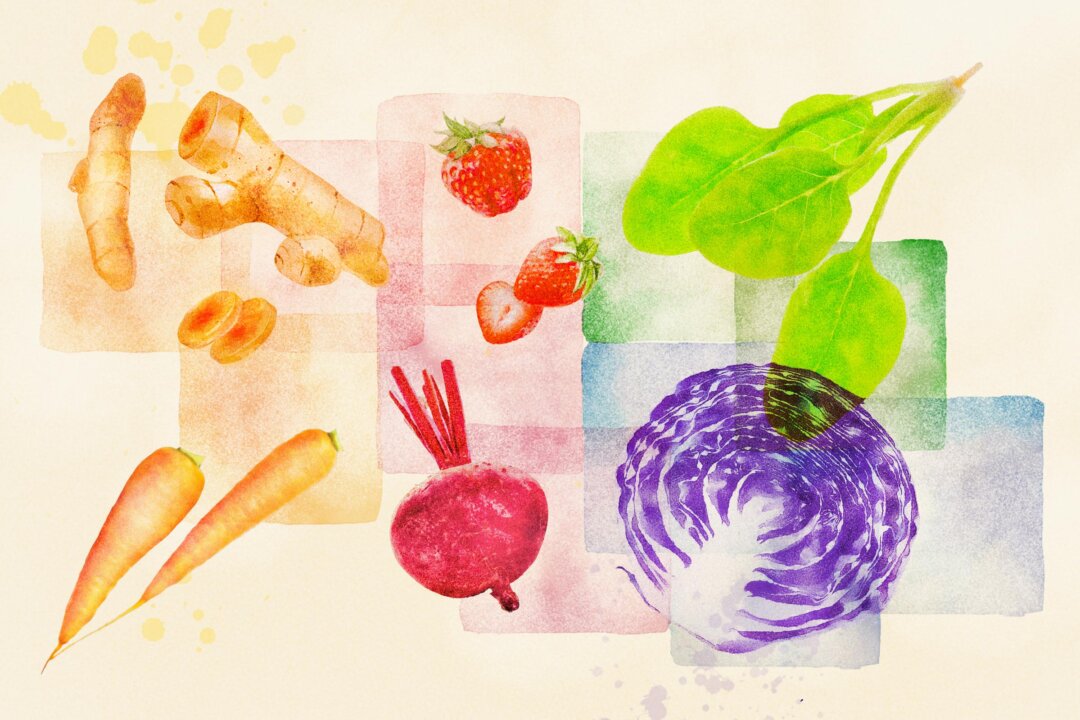“Just the other day, I couldn’t bring myself to throw out the small amount of vibrant water left after boiling purple cabbage. I let it sit overnight—and it turned brilliant,” Julianaa Satie, founder of The School of Natural Cookery, told The Epoch Times. Two days later, it had naturally dehydrated into a paste—a natural dye.
Purple cabbage, for example, is high in anthocyanins, an antioxidant that gives it its purple color. Beetroot juice, as a more commonly used red colorant, has been shown to help boost nitric oxide levels, which supports circulation, Jennifer Bruning, a registered dietitian nutritionist and spokesperson for the Academy of Nutrition and Dietetics, told The Epoch Times. Color plays a critical role in food—it shapes our expectations, draws the eye, and ultimately influences how appetizing a product feels.

Take sugar-based candies, for example: without dyes, they’re often pale or colorless—something that doesn’t meet consumer expectations. Today, the company remains committed to using natural colors in its dinnertime foods—like paprika in Spanish rice—but won’t phase out synthetic colors from treats in all markets. In regions like Europe, artificial colors are still being removed.
In other regions where consumers don’t view synthetic colors in candy as a concern, those colors remain. “There’s a unique mindset when people enjoy chocolate and candy—one that doesn’t apply to other food categories,” Christopher Gindlesperger, senior vice president for public affairs and communications at the National Confectioners Association, told The Epoch Times. Beetroot is one of the most vibrant natural sources of red coloring.
You can juice raw beets or blend and strain them to extract the liquid. “If you don’t want to alter the liquid ratios in a recipe, the powder works just as well,” Rachel Jesson, a natural plant-based chef and educator, told The Epoch Times. She suggests freeze-drying beets and then grinding them into a fine powder using a blender, coffee grinder, or spice grinder—perfect for coloring frosting, cookies, or red velvet cake.
“For a brighter, more playful pink, try grinding freeze-dried raspberries or strawberries.” For a fresh green hue, juice or blend spinach or kale. These work well in smoothies, pasta dishes, or frostings.
Matcha green tea powder is another option for a vivid, earthy green. You can also experiment with wheatgrass or green algae to produce various shades of green, Jesson said. Juiced carrots offer a natural orange dye that pairs well with baked goods thanks to their natural sweetness.
For a bold, golden yellow, turmeric is a go-to. Saffron threads, steeped in warm water, can produce a luxurious yellow tone, while golden beets create a soft, pale yellow that’s perfect for lemon-flavored desserts or light-colored frostings. Another is to add an acid like lemon juice, which can brighten certain hues—especially blues, purples, and reds.
For instance, adding lemon juice to purple cabbage dye can shift the color to a vivid magenta or pink, elevating the overall effect. All the colors mentioned earlier can be used in everyday cooking, Jesson said. Even a simple homemade pâté can become more enticing with the right pop of color, she added.
“Food for me always revolves around color. I have so many favorite recipes that use natural dyes.” One standout dish is her take on Japanese maki rolls, made with short-grain brown rice instead of traditional white and infused with small batches of different natural dyes.
“It’s one of my prettiest dishes—and delicious, too,” she said. Jesson has also used natural dyes for festive creations: red-tinted white cacao chocolates on Valentine’s Day, colorful cheesecakes for birthdays and gifts, black sourdough loaves infused with charcoal for Halloween, and red-dyed pastry for Christmas mince pies. While the possibilities are festive and fun, Jesson emphasized that a light hand is key when it comes to flavor.
Use just enough dye to color your food without affecting the flavor. Also, when experimenting, keep in mind that adding too much liquid or powder can throw off the balance—especially in gluten-free baking. Jesson advised adjusting by subtracting some dry ingredients and replacing them with powdered dye, or by reducing a liquid ingredient to make room for a liquid dye.
.
Health

Natural Alternatives to Synthetic Dyes: Common Food-Based Colorings and How to Use Them

Natural food dyes struggle to gain traction despite potential health benefits, experts say.















